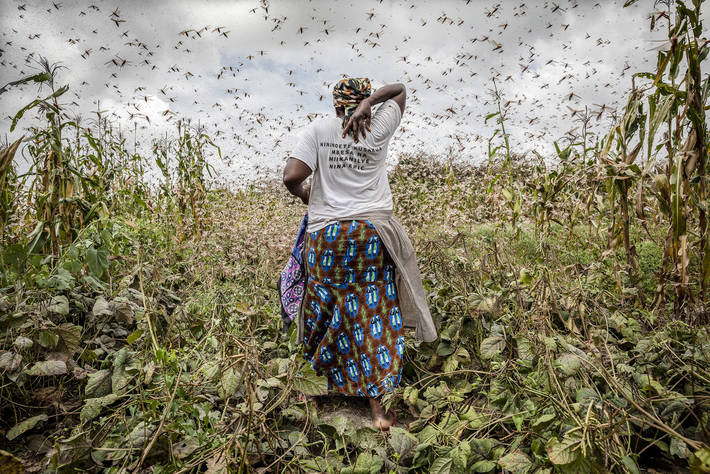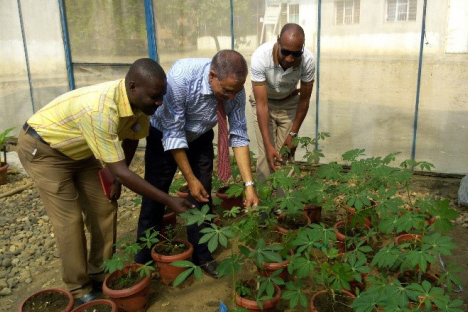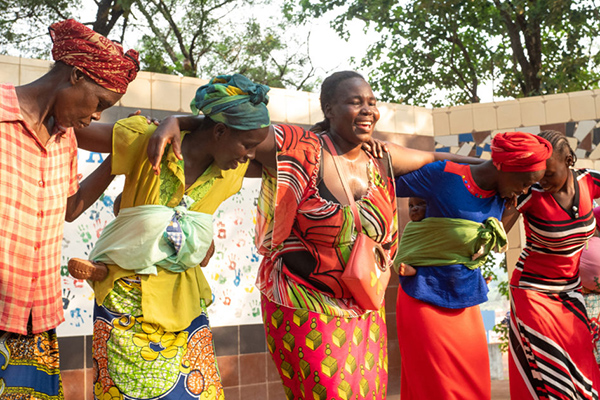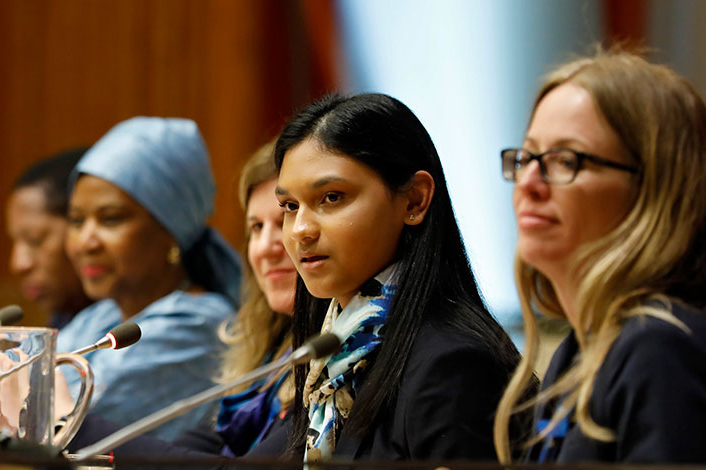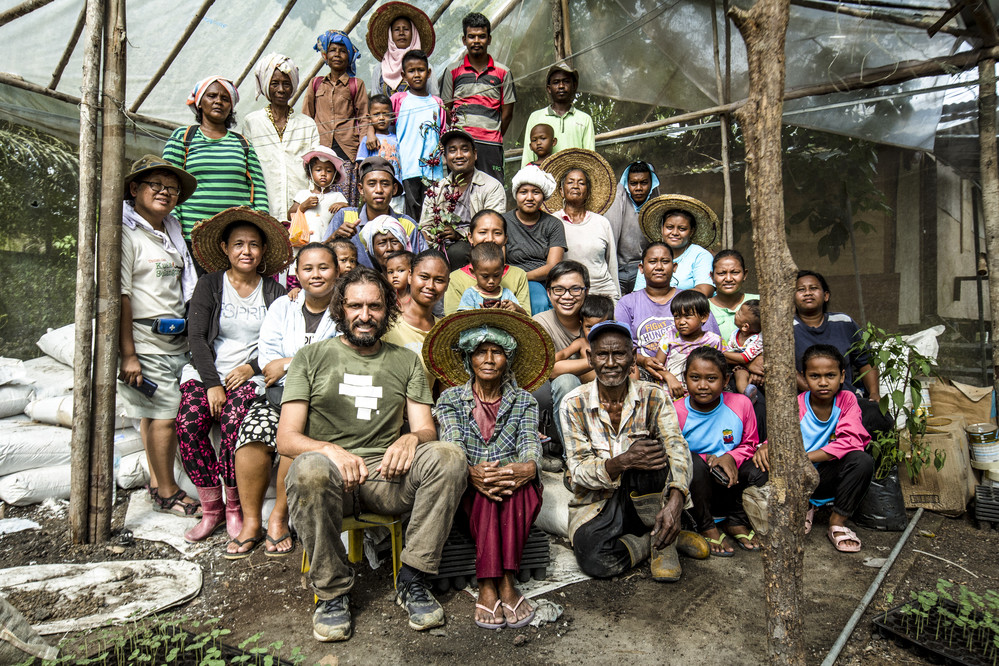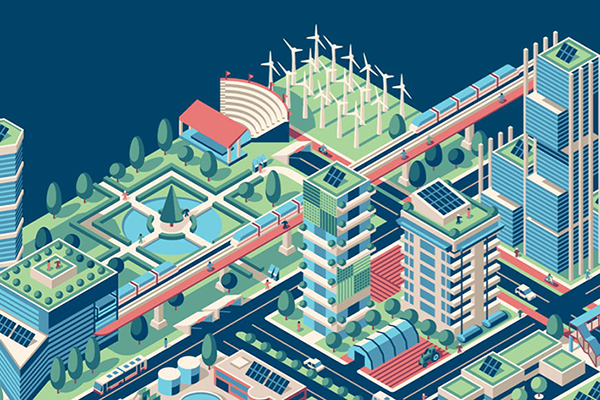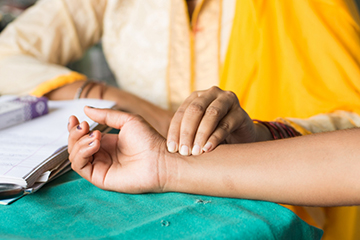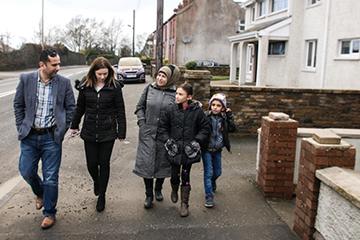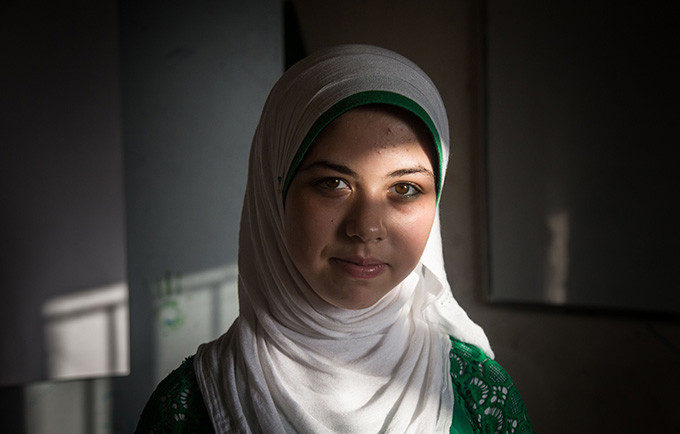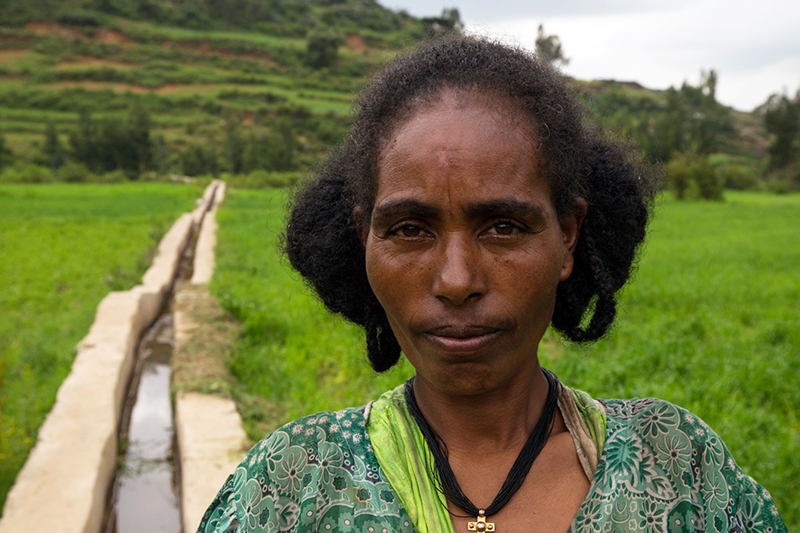East Africa is a region beset by climate- and conflict-related shocks. Millions of people are already acutely food insecure. Now they face another major hunger threat in the form of desert locusts. The locust upsurge affecting East Africa is a graphic and shocking reminder of this region's vulnerability. This is a scourge of biblical proportions. Yet as ancient as this scourge is, its scale today is unprecedented in modern times. On 20 January, FAO called for $76 million to help combat this pest crisis. But the resources to control the outbreak have been too slow in coming. Since its first appeal to help what was then three affected countries, the locust swarms have moved rapidly across vast distances and the full extent of their massive scale has become clear.
When Burundian cassava farmers split open the plant’s starchy root, they’re hoping to find white flesh that resembles coconut meat. If instead the inside is marked with brown patches, it’s likely suffering from cassava brown streak disease (CBSD) — bad news for the farmer, who can no longer eat or sell the produce, and whose entire harvest may be at risk of loss due to the disease. Cassava, a carbohydrate-rich root vegetable, is the second most important staple crop in Burundi. Low cassava yields can exacerbate the country’s food insecurity, from which half of the population already suffers. IAEA experts trained Burundian scientists in plant breeding techniques, using induced mutation and tissue culture techniques to develop a new cassava variety.
After the success of the first edition, the competition has returned to identify and celebrate disruptive ideas and innovators who will lead the transformation of the sector as well as those who are making a positive impact in their local communities. In 2019, over 300 initiatives from 84 countries were submitted. Projects ranged from new technologies, community-based tourism development initiatives, innovation software and startups focused on innovation-driven agricultural sustainability. For this second edition there will be two prizes. The first category will identify the initiative that is both innovative and has a sustainable social impact. The other category will recognize the most disruptive gastronomy tourism startup overall.
Decades of instability have caused untold suffering for people across the Central African Republic. One of the worst humanitarian crises in the world, more than one million people remain displaced and over half of the country’s five million population requires humanitarian assistance. The small landlocked country has been ravaged by conflict and civil war, which has resulted in countless deaths and forced displacements, and has prevented the country from developing. As part of efforts to alleviate people’s hardship, UNOPS is working with the government and the World Bank to deliver a multifaceted project that is helping to lay the foundations for peace and improve living conditions for displaced communities.
Kiara Nirghin, 19, is a student, scientist, and advocate for women and girls in STEM. In 2016, she won the Google Science Fair for her work on a method to increase food security in drought-affected areas.
Cacao – the key ingredient in chocolate, and a major cash crop – is making a comeback in Sao Tome and Principe, thanks to IFAD’s assistance, tripling Sao Tome and Principe’s exports in comparison to just 12 years before.
Small family farms make up 85 per cent of all farms worldwide, and smallholder farmers make up the majority of the world’s rural poor. To mitigate the challenges that come with working in isolation − and to increase profitability and productivity − these smallholders often form organizations. Working together makes it easier for small-scale farmers to access raw materials, reach larger markets and reduce costs. And when farmers thrive, other players in the food system benefit, too.
For centuries, women have made significant contributions to the field of science. They’ve discovered life-saving remedies, devised world-altering inventions, and produced far-reaching research, but in many cases their invaluable advances are minimized or neglected. For too long, the STEM fields have been shaped by gender biases that exclude women and girls. The gender gap in science, technology and innovation translates to missed talent, untapped discoveries and biased solutions. Here are just seven women scientists you need to know and celebrate.
It’s 2050 and 68 percent of the earth’s population—6.5 billion people—are urban. Well-managed cities are offering millions more people boundless cultural, social and economic opportunities. These are healthy, vibrant and equitable societies which have left no-one behind. And this was how one of them did it.
Despite increases in life expectancy, the rise in chronic and non-communicable diseases has become a global threat. Every year across the globe, 15 million people die before age 70 from these diseases, which include cardiovascular disease, cancers, diabetes and obesity. Obesity is one of the known risk factors for non-communicable diseases and a disease in itself. A new World Bank report “Obesity: Health and Economic Consequences of an Impending Global Challenge” sheds light on the growing obesity epidemic and its negative impacts.
Out of 1.4 million refugees estimated to be in urgent need of resettlement worldwide, only 63,696 were resettled through UNHCR, the UN Refugee Agency, last year. While the number of refugees resettled in 2019 increased modestly by 14 per cent when compared to the previous year, in which 55,680 people were resettled, a tremendous gap remains between resettlement needs and the places made available by governments around the world.
This year, for Valentine’s Day, UNFPA is calling on the world to prioritize ending child marriage. Examples of this harmful practice can be found everywhere. Learn seven little-known facts about child marriage.
While women do half the work in agriculture, they don’t get a fair share of the assets, resources or services that farmers need to make a living. As part of IFAD's holistic approach to managing agricultural risks, insurance is a valuable tool.
Necessity led Fatemeh to discover her potential for business. FAO encourages women in rural communities to take a leading role in starting and running community businesses.
More than half of the world's people live in cities today. By 2050, nearly seven in ten people will be living in cities. Cities account for more than 70 per cent of global carbon emissions and 60 to 80 per cent of energy consumption. Rapid urbanization has created additional challenges such as social inequality, traffic congestion and water contamination and its associated health issues. ITU says governments and municipalities can use information and communication technologies (ICTs) and other technologies to build smarter and more sustainable cities for their citizens.

